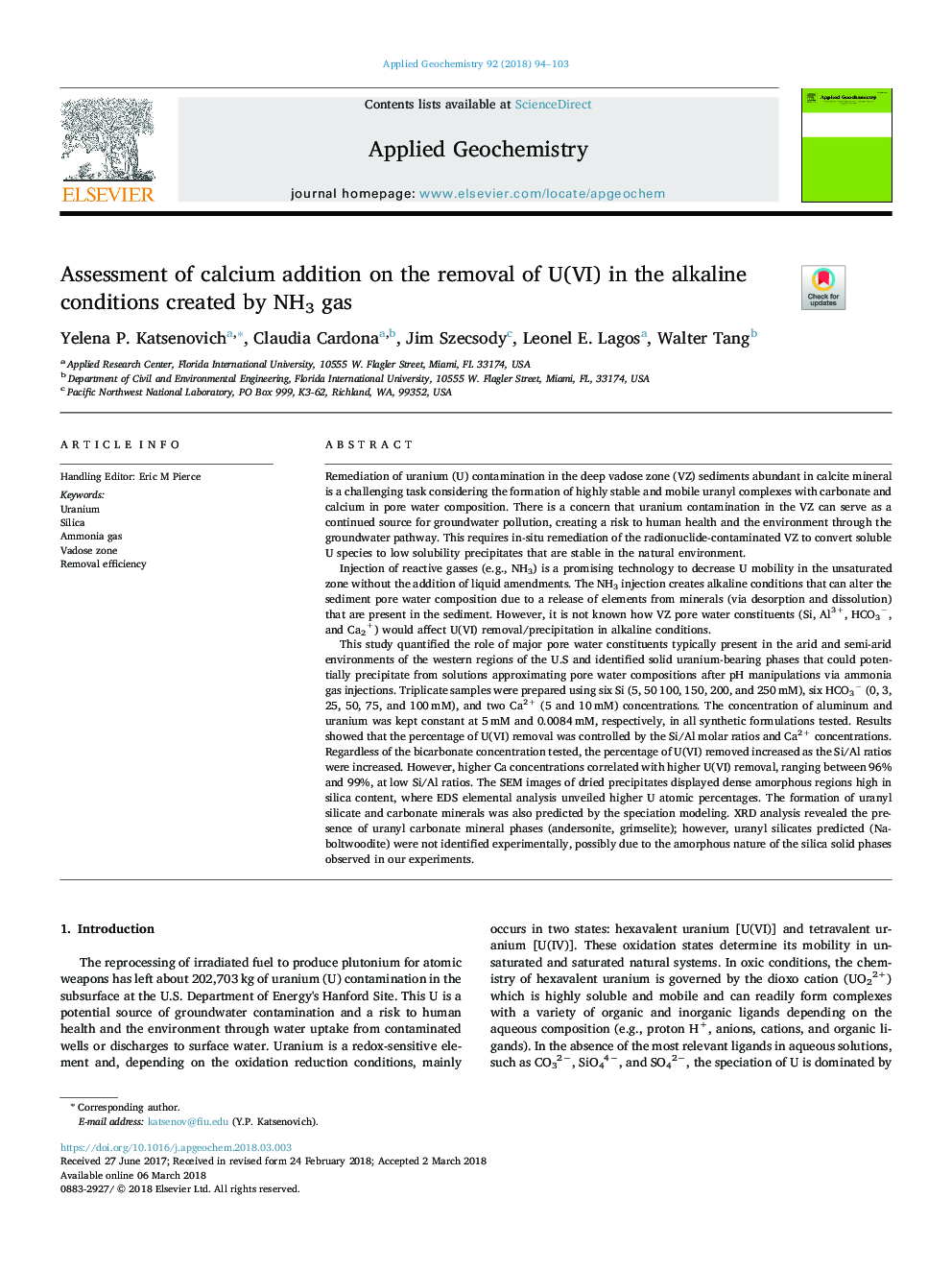| Article ID | Journal | Published Year | Pages | File Type |
|---|---|---|---|---|
| 8863129 | Applied Geochemistry | 2018 | 10 Pages |
Abstract
This study quantified the role of major pore water constituents typically present in the arid and semi-arid environments of the western regions of the U.S and identified solid uranium-bearing phases that could potentially precipitate from solutions approximating pore water compositions after pH manipulations via ammonia gas injections. Triplicate samples were prepared using six Si (5, 50â¯100, 150, 200, and 250â¯mM), six HCO3â (0, 3, 25, 50, 75, and 100â¯mM), and two Ca2+ (5 and 10â¯mM) concentrations. The concentration of aluminum and uranium was kept constant at 5â¯mM and 0.0084â¯mM, respectively, in all synthetic formulations tested. Results showed that the percentage of U(VI) removal was controlled by the Si/Al molar ratios and Ca2+ concentrations. Regardless of the bicarbonate concentration tested, the percentage of U(VI) removed increased as the Si/Al ratios were increased. However, higher Ca concentrations correlated with higher U(VI) removal, ranging between 96% and 99%, at low Si/Al ratios. The SEM images of dried precipitates displayed dense amorphous regions high in silica content, where EDS elemental analysis unveiled higher U atomic percentages. The formation of uranyl silicate and carbonate minerals was also predicted by the speciation modeling. XRD analysis revealed the presence of uranyl carbonate mineral phases (andersonite, grimselite); however, uranyl silicates predicted (Na-boltwoodite) were not identified experimentally, possibly due to the amorphous nature of the silica solid phases observed in our experiments.
Related Topics
Physical Sciences and Engineering
Earth and Planetary Sciences
Geochemistry and Petrology
Authors
Yelena P. Katsenovich, Claudia Cardona, Jim Szecsody, Leonel E. Lagos, Walter Tang,
